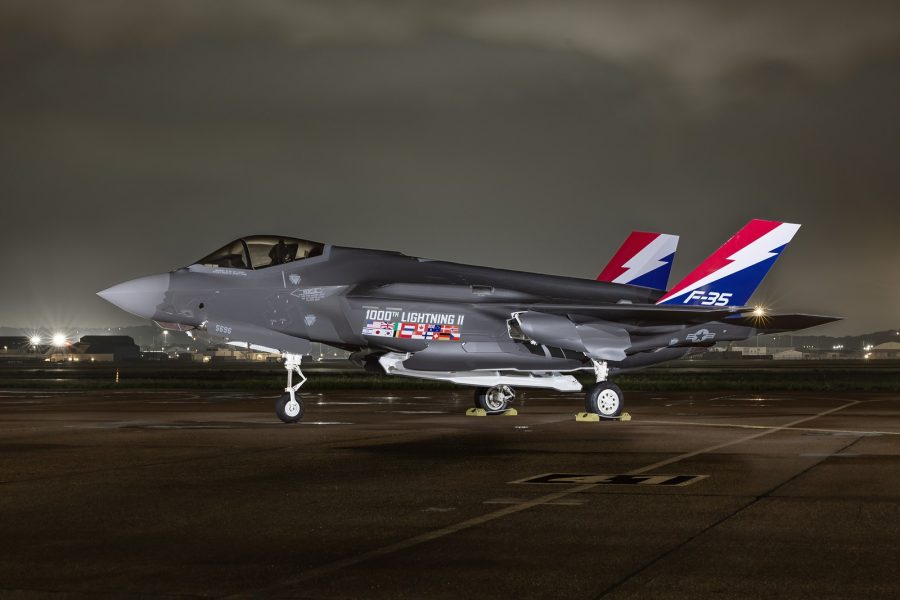Lockheed Martin is making good on predictions that it can deliver F-35 fighter jets at a rate of 20 per month, helping clear a backlog created by a yearlong hold on deliveries that was lifted in mid-July.
The contractor has also increased its estimate for how many F-35s it will deliver in calendar 2024.
A Lockheed spokesperson said that at the end of June——before the delivery hold was lifted—the company had delivered 990 F-35s. By the end of September, that number had risen to 1,040. Now, it is above 1,060.
“We have delivered 60+ jets in three and a half months,” the spokesperson said. She added that while the original delivery estimate for calendar 2024 was 75-110 of the fighters, Lockheed is revising that figure upward to 90-110, “based on deliveries so far” this year. That would indicate deliveries of between 15 and 23 more jets per month by Dec. 31.
Earlier this year, the Government Accountability Office reported the Defense Contract Management Agency believed Lockheed could theoretically reach 20 deliveries per month, even though it had never before exceeded 13. Lockheed declined to provide detailed specifics.
The government stopped accepting F-35s in summer 2023 because they were being built with Tech Refresh 3 hardware, but the associated TR-3 software was still being tested. Lockheed continued to build new F-35s, but the jets went directly into storage, awaiting the conclusion of TR-3 testing. TR-3 is the hardware and software package which undergirds the Block 4 upgrade of the F-35, permitting new electronic warfare, communications, navigation, and weapons systems to be used.
In June, the Joint Program Office lifted the hold on deliveries, saying Program Executive Officer Lt. Gen. Michal Schmidt was satisfied that a truncated version of TR-3 software was sufficiently stable and safe for flight. It was also necessary that deliveries resume to avoid significant disruption of units awaiting the new aircraft, both in the U.S. and overseas.
Lockheed Aeronautics president Greg Ulmer told Air & Space Forces Magazine in September that the priorities of deliveries have been adjusted to accommodate special needs of various users. Australia, for example, needed its new aircraft first to achieve full operational capability, and received priority for deliveries. Other users offered no complaints, he said.
The GAO estimated it would take Lockheed at least a year to clear the backlogged jets—estimated to have been just over 100 airplanes—because Lockheed continues to build new F-35s and is delivering them alongside the stored ones. It was decided to do it that way to disrupt the production and delivery process as little as possible, Ulmer said.
Each stored airplane gets four checks—two company, two government—before being delivered, and each received two of those checks before being put into storage, he explained. The withheld airplanes received power-ons and active care during storage and were not simply mothballed, Ulmer said. This was done to expedite the delivery process once the JPO gave the green light.
Ulmer expressed confidence that the backlogged airplanes will all be delivered sometime in 2025, pegging the process as taking 12-18 months. He said he expects the F-35 delivery tally in 2025 to be “156-plus” aircraft. There are now 19 countries either operating the F-35 or signed on to buy the fighter. There’s been no letup in production because demand remains strong, he said.
The 1,000th F-35 was delivered with little fanfare to the 185th Fighter Wing of the Air National Guard at Truax Field, Wisc., in July.


